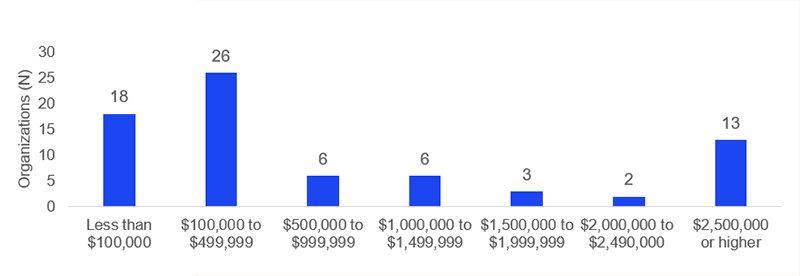Funding and Delivery Models of Resident Services in Affordable Housing
The COVID-19 pandemic not only highlighted the inextricable connection between housing and health, but also underscored the value of resident services. Resident services programs—which range from education, healthcare, eviction prevention, long-term supportive housing, and workforce development—have demonstrated their efficacy for residents, organizations, and communities for decades. However, despite their known benefits, the type, availability, and consistency of funding varies greatly. Resident services funding is further complicated by often opaque information and processes.
In “Resident Services Funding & Delivery Models Among Affordable Housing Nonprofits,” a new paper co-published by the Center and NeighborWorks® America, I report on research I conducted as a Gramlich Fellow to help fill this gap. In the course of my work, I surveyed over 70 NeighborWorks organizations that own or manage affordable housing and conducted 19 pre- and post-survey interviews with some of the organizations and other resident service experts. The surveys and interviews sought to address three primary questions:
- What are the resident services offered?
- How are these resident services funded?
- How are these resident services delivered?
Key findings include the following:
- Organization-Wide Offerings: Most organizations offer resident services at all or nearly all their properties, with 55 percent offering resident services to their entire portfolio and less than 15 percent of organizations offering resident services to less than half of their properties.
- Relatively Modest Funding: While budgets for resident services ranged anywhere from $2,500 to $17,200,000 (Figure 1), over half (53 percent) of organizations had a budget under $300,000.
Figure 1. Total Resident Services Budgets Among Organizations
- Variety of Offerings: The range of resident services offered include child development services and strategies (offered by 24 percent of organizations), eviction prevention and/or financial capability services (93 percent), food security services (66 percent), health and well-being services (72 percent), K-12 education services and strategies (31 percent), long-term supportive housing (50 percent), tax preparation (22 percent), and workforce development (30 percent).
- Array of Funding Sources: Funding generally comes from an organization’s operating budget, government, foundations, and/or private donors. Organizations used an average of 2.6 funding sources.
- Differing Models of Service Delivery: Service delivery across most organizations includes the use of a third party in some capacity. However, the prevalence and types of partnerships vary by type of service.
Post-survey interviews offered additional insights into funding and delivery of resident services. Government funding for these programs increased during the pandemic, underscoring their importance to resident stability and well-being; however, maintaining higher levels of funding remains a challenge. While diverse funding models enable growth and innovation, the need to patch together resources from government, foundations, private donors, and other sources challenges the stability of these vital services. If public, nonprofit, and other funders could increase funding availability and consistency, they could redefine housing to extend beyond shelter and include services that promote the physical, emotional, and financial health of residents.


